Multifandom but mostly Saezuru Tori Wa Habatakanai. I quite suddenly got into BL, found Saezuru, and now my brain is filled with twittering bjrd noises. My life is busy, so I most likely won’t post or talk much. I have many thoughts I wanna spill though, so I hope my ramblings will interest a few. :)
Don't wanna be here? Send us removal request.
Text

Just thought of another
#saezuru tori wa habatakanai#nanahara#hah do you get it#if these have already been done sorry#don’t wannna be spoiled so I ain’t checking the tags#not what i'm called
17 notes
·
View notes
Text
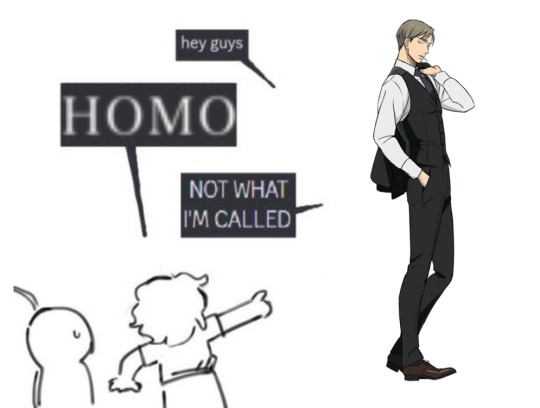
What no saezuru does to a mf
25 notes
·
View notes
Text
Something fun for the fandom, if you don't like it you can at least admire the color coordination, ok? Ok.




If you still don't like it I included the panel. Color it yourself, make your own fun. Do something interesting with the background unlike me, I couldn't think of anything I liked.
9 notes
·
View notes
Text
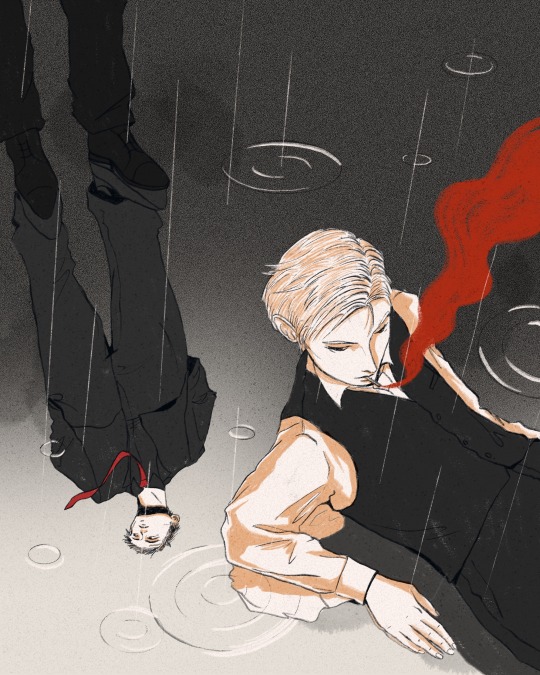
The calm before the storm
114 notes
·
View notes
Text
I’ve been Saezuru starved so long… but I can’t bring myself to look at spoilers. Not yet.
Ahhh the suspense is killing meee
17 notes
·
View notes
Text
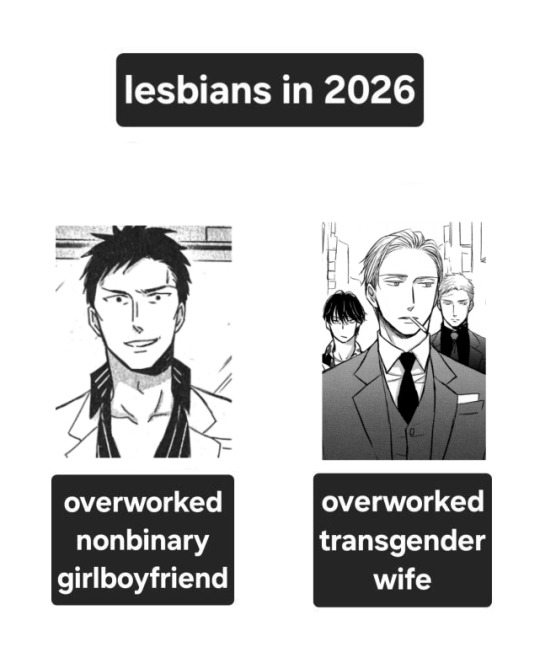
To 10 woke people in this fandom
16 notes
·
View notes
Text
Concept


Eaten alive / Swallow my words
Themes of: plants vs animals, birds (sparrows?), food/berries (specifically holly here), night, light vs dark, puppetry, natural vs unnatural
*Please note this is an edit, not a drawing. Birds and quotes from Saezuru and the bush is from The Last Unicorn.
10 notes
·
View notes
Text
So. Systemic abuse and critiques thereof are the foundation of saezuru. This includes gender roles and patriarchy, heteronormativity, police and the law, the family dynamic, so on and so forth.
Anytime Yashiro is forced into a system it fails. Yashiro has never not had enemies or been singled out, nor integrated "properly" into any group, nor been interested in doing so. As much as someone like Kage, for example, has "flaws" or "abnormalities" he's still able to do what he's told and become a doctor (bonus points for specifically claiming a quiet domestic life with Kuga, as much as being with a man was likely the biggest deviation of his life). Same with Doumeki in becoming a cop or even a yakuza since he utilizes the same skill set either way (which in itself could be considered a critique?).
Everything that makes these characters ordinary also allows them opportunities. They know exactly which rules they can bend before ultimately snapping back to the norm, and they either will attempt to force Yashiro into doing the same or distance themselves as much as possible depending because it is considered the "right" thing to do.
Everything Doumeki is or has done to Yashiro is The Norm. It is corrective, intentionally or otherwise. Doumeki may have some problems but Yashiro is a problem, one that must be solved according to those norms (something something cons of personhood being conflated with trauma that I don't have the energy to write right now). This is why the violence inflicted on Aoi or Ryuzaki's girlfriend (or Yashiro for that matter), or that Hirata or Inami (etc) inflict on others, is able to be planned the way that it can, and is ultimately treated as unsurprising in a way. It's also why Yashiro, as the character with the most outside perspective, listens so well to others and often is the one giving advice or a shoulder to lean on—a quality that is often subtly taken advantage of.
Yashiro is not so much a character that runs fueled by privilege, but rather a sort of jaded understanding and acceptance of it all. There's seemingly nowhere else to go and nothing worth asking for. I think that kind of relationship with the world is where the story itself stems. Because in that case what's there to do? What happens to a character without a goal?
53 notes
·
View notes
Text

Feb 5, 2024 I don’t remember if there was something that inspired this one tweet. But it was also uploaded on the Saezuru discord server and of course it was something that would have caught my attention regardless. Since I shared my immediate thoughts on discord I didn’t bring it up on tumblr as well, but I think it’s good that I save it here as well.


Yoneda Kou Sensei expressing individuality, awareness and understanding of her artistic voice in context is something I like to pay attention to.

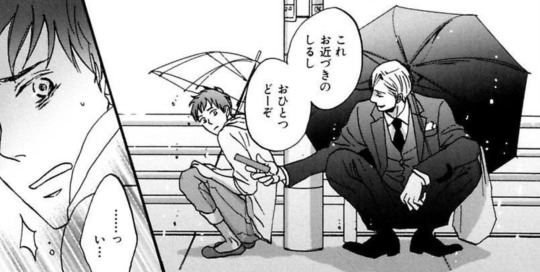
Oct 8, 2024 Yoneda Kou Sensei has been uploading chapters from Saezuru vol. 1 on her twitter account. This is what she also wrote the day she uploaded chapter 2 and the image is what she is referring to specifically as her favorite scene. Notice how she knows very well that her own preferences and the things that intrigue and interest her are probably different from those of her editor on one hand and those of her readers on the other. Self awareness doesn’t mean that she does everything she can to conform to those expectations because she understands that her vision and authorial voice matter as well and are maybe what makes Saezuru the successful manga it is. She asked for the readers to share their preferences and opinions as well. That is expected. It’s a conversation and it’s encouraging. And also a bit of clever marketing.

“The second heartwarming chapter. When I said that, my editor burst out laughing. It's heartwarming, right? I like the scene where he gives her a condom. But I can't put that on page 0. I know that the parts I like aren't so much liked by the readers, so I asked them to let me know and put them here. What do you think? I'll upload the third chapter sometime soon”.
Automatic translation from twitter got some of that wrong. The part I underlined in yellow is okay though.
I’m not the most methodical person and I didn’t collect all of what Yoneda shared on SM and all her interviews. I also don’t think that they are necessary to form the opinion one can have about the manga. But for me personally these types of insights give me the reassurance that yes I prefer Saezuru’s way of telling a story about a survivor of CSA for specific reasons and one is that the author lets what goes on around her in the real world be a source that informs her writing too. And she demonstrated to be a keen observer.
Also friendly reminder that Japanese people had and still have discussions about consent in the same way as many other countries in the “Western” world. The insularity of Japan ended like two centuries ago? And A LOT happened since Saezuru started publication. And it might be subtle but Saezuru’s way of showing things demonstrates that changes since Shiori Ito’s case broke public censorship have not gone unnoticed. You can also look up the Flower Demo movement and the different hashtags used in Japan in addition or in alternative to #MeToo. And to me it’s really hard to overlook that gender had a complex significance in all this and that male sexual assault victims being recognized for the first time since the constitution of modern Japan contributed to defy other rape myths as well. And because Yoneda has a habit to observe reality, even maintaining firm boundaries between fiction/manga and reality, I believe she is still aware that the themes of Saezuru might resonate differently within that knowledge. And considering that distinction: I hope it’s clear that another manga like Haikyuu was largely successful because of its realism. Yes, the characters are fictional, but a lot of what was shown regarding volleyball followed closely the rules, strategies and experiences of real life. Realism applied to manga doesn’t mean that you see a strict copy of reality or that the author isn’t creating a story that is entirely fictional and focuses heavily in aspects that can solicit a positive response from its readers.
But can you really look at Doumeki’s father, at Inami, at every action the police take in Saezuru and think that this manga shows us policemen in such an idealized way or as a source of inspiration? Can you look at Doumeki being successfully integrated into both the police force and the yakuza and not see the implications? Yashiro’s position of wakagashira was shown as a fluke by Yoneda who took great care to describe all the ways Misumi had a role in it and all the discontent that provoked, in addition to the rumors and threats and the fact that Yashiro is alive because Ryuuzaki defied Hirata’s orders. And I can go on but the point is.
In writing and sharing my analyses, I hope to pay tribute to the particular attention, awareness and sensibility that Yoneda Kou Sensei demonstrates. Telling a story as fictional as it can be but without denying reality altogether.
28 notes
·
View notes
Text



76 notes
·
View notes
Text

#saezuru tori wa habatakanai#saezuru fanart#I wonder what Aoi thinks of Doumeki now..#also what does her art look like?#I must know
32 notes
·
View notes
Text

62 notes
·
View notes
Text
Interesting comparison! I haven’t read Birds of Shangri-La, but I have watched and read a decent amount of anime and manga. Generally there is a trend of “telling” more than “showing” information to the audience, and Shangri-La seems to follow that trend more closely than Saezuru. There is a misconception that telling is inherently bad, however (and conversely, that showing is inherently good).
Saezuru has many moments where it tells information to the audience in dialogue (conversations) or monologue, but I believe what makes Saezuru different and more engaging is that we’re constantly communicated (complex) information beyond what is literally being said. Such as, Yashiro at the beginning explicitly saying he is a masochist, sadist, etc., but that isn’t really what those sentences are there for. He says all that but Yoneda’s purpose isn’t to say that that’s what he is—rather, she’s trying to say the opposite, and those sentences are actually there to reflect the depths of his trauma. “Telling” is used most effectively as a device when there is more to the sentences than just plain exposition. They reveal things about the characters, the way the world works (world building), etc. beyond the surface level.
Also, another common writing trend you mention is that characters often interpret things based on the literal truth and not their individual perspectives. This is mundane when it’s prevalent throughout a work with little variation (unfortunately most stories I’ve experienced do that). Using the Shangri-La example of nail-biting, because what Apollo observes is exactly true, there’s no extra meaning behind the observation (making it dull). Phi bites around his fingernails when he is nervous and that is true. In contrast, this isn’t always the case with Saezuru. Saezuru does have moments where a character makes observations and they turn out to be true, but there are also many examples where that doesn’t happen, making for a much more engaging reading experience. For example, Yashiro in the arc rn keeps interpreting Doumeki’s behavior as him hating him, but we know this to not be true because of other panels and actions of Doumeki that suggest otherwise. So when Yashiro interprets Doumeki’s behavior this way, it forces the reader to think “Is that really true?” and to take into consideration that Yashiro thinks in these ways because of his traumatic background. Writing this way is like writing every character to be an unreliable narrator… which is pretty true to life, and probably explains why the characters and setting in Saezuru feel much more realistic.
I’ve always had these observations about Saezuru in the back of my mind, but haven’t had the words to articulate these ideas until now. So, thank you for that!
So let’s talk about… (h)ornithology…

Saezuru tori wa habatakanai (English title: Twittering Birds Never Fly) by Kou Yoneda is an ongoing manga, published in ihr HertZ magazine and currently available in nine volumes. Publication began in 2011.
Shangri-La no Tori (English title: Birds of Shangri-La) by Ranmaru Zariya is an ongoing manga, published in Canna magazine and currently available in three volumes. Publication began in 2017.
I recently had a interesting conversation about possible similarities and differences between these two titles and I thought that it could be interesting to write down some thoughts. I also caught up with Shangri-La, since I had read it in the past when the third volume wasn’t available - well I reread it entirely because, like many other bl manga I got recommended, this one didn’t hold my attention or capture my interest in the way Saezuru did and I didn’t remember most of it. I want to underline that this is my personal experience and a matter of preferences, that I am sharing my personal opinion and I am not trying to make a comparison in terms of good manga vs bad manga. I want to talk about my reasoning and observations, and I’ll attempt to illustrate my points so that it is hopefully clear the terms of the comparison I am making.
I won’t deny that in writing this post I will reiterate previous comments I made about Saezuru as a bl manga that seems to me quite exceptional and therefore much more interesting because of its realistic approach to the world and characters being portrayed. And because from a very superficial perspective, Shangri-La and Saezuru seem to treat very similar themes and dynamics, it is useful to pick up where and how they differ. This post doesn’t want to say anything about reading for entertainment or escapism, rather it’s more about understanding how you write a story in a manga format and how that relates to how the story works overall. So if you’re bored with this topic, you can skip this one.
I don’t have direct knowledge of the composition of the magazines these two manga are published in, but I can say that they are more on the explicit side of bl manga (erotica). Which means that they cater to a readership that expects to see explicit sexual scenes as soon as possible, mostly don’t want or expect female nudity, and will stay with the story if they are enamored with the characters and engaged in the anticipation of a sentimental outcome and emotional growth between a couple that is usually at the center of the narrative. To come up with a premise that is immediately satisfying is a hard task. In Saezuru, we have the exploitation of an already established couple from another short story: Kageyama and Kuga for sex to be teased in the very first pages, and maintaining a level of “spice” by exploiting the main character Yashiro’s hyper sexuality as a prominent part of his characterization. Shangri-La makes the whole setting works in favor of that immediate explicit action: a brothel in a non-specified island, one of the two main characters being a sex worker. Yashiro and Phi are the first to be introduced as the most pro-active and easy-going in terms of sexual freedom; Doumeki and Apollo are introduced next, in the first chapter as well, and they both don’t express sexual desire representing instead a restraining, reassuring force: one is a “straight” employee, the other has been impotent for some time.
But let’s talk about how these two scenarios differ, because they have less things in common than they are alike, once you pay attention to few details. We meet Yashiro in a pretty nondescript office, we don’t get a first name, and the family name Yashiro is not rare; as we get introduced to other characters, Doumeki is the only name that stands out a little, but they are all Japanese family names. Whereas a Phi or an Apollo are already exotic names that fit the distinctive characteristics of the rather fantastical environment they inhabit. Reading the entirety of Saezuru we find ourselves not having to travel much outside of the Tokyo metropolitan area, we get a sense of where certain events take place and of real districts and buildings in the city, so much so that people have drawn maps to visit some of them.

You can’t do quite the same thing with Shangri-La, not only because it’s undisclosed what either the island nor the mainland and country are called, but because the whole scenario is barely plausible in terms of real world economics or circumstances. Apollo’s job doesn’t even make sense, unless you buy into the proprietor of the brothel’s business model. I had to suspend my disbelief very hard very quickly. It’s fantastical, and exotic and barely credible, except that sex work and sex tourism are a very sensitive and interconnected issue in many areas in Southeast Asia, making Shangri-La’s exoticism, orientalism and hyper-sexualization feel a-critically exploited. There are talks in the manga about underage prostitution and groups pushing for changes in the legislation around sex work, but the topic is yet to be explored and because this is an imaginary place, it doesn’t really seem that the matter is considered in more realistic or detailed terms. The discussion is just a device to create an ambience and a sense of precariousness, Phi’s whole existence can’t stay as it is much longer.
Saezuru portrays yakuza and police in terms that are relatable to the real world, including references to laws and how criminal activities or social interactions are handled. Using the real world as a setting, Yoneda can add details and layers to story and characters that feel very grounded. It adds credibility, and the possibility of exploration into the social background of different characters less as a plot device (tragic backstory) and instead in more rich terms, in relatable yet different mentalities and habits associated with certain experiences. Shangri-La’s setting is much more similar to romance novels, Phi is the ingénue prostitute that doesn’t know or understand many common things. He adapted to extraordinary environmental conditions as best as he could but never grew out of them, sheltered in this artificial paradise based upon fleeting pleasures. Apollo’s role is quite clear: the straight man, so serious he was married, he desired one exclusive person to love and was instead betrayed. There is not much about him in three whole volumes compared to how much we get to know about Doumeki in the first three chapters, and that will only get explored more. About Apollo, we received most of the information from his best friend, who is also conveniently his lawyer, another character who seems to be around only for help with the exposition.
The insistence upon Apollo’s sexual orientation is interesting as well because it serves more as a fantasy than anything else: he will resist the charms of everyone except The One. And True Love surpasses any limitations, including sexual orientation or preferences in that one instance. Is Doumeki the same? I would argue that this is exactly what Yashiro seems to say when he’s talking to Kamiya. Doumeki is straight, is attracted to women, it so just happened that he was attracted to Yashiro as a one time exception. But is Yashiro’s reasoning or what he says out loud the most reliable source of information about what things actually are meant to be understood in Saezuru? And this is the same for every character, every one is telling the story according to their partial knowledge and understanding. No one seems to ask Doumeki. Would Kuga say that Doumeki is straight? There is a level of complexity and multiplication of the points of view in Saezuru, brief conversations and moments that are hints, like we are witnessing the story more than we are told about it. And everyone is left wondering. Common tropes are brought down to earth, in my opinion. Doumeki said that he had no knowledge of the possibility of being attracted to men until he met Yashiro and he felt so strongly that he regained sexual desire. Yashiro now isn’t able to respond to other men in the same way as before, but Doumeki is the exception, he is The One, right? But these circumstances if analyzed deeply have deep emotional implications and can be also explained using common sense. Here is Misumi using the aforementioned common sense:

There are other stylistic choices too in how the narrative is constructed that I noticed. Zariya is a talented and expert artist and designed stunning, sexy and appealing panels since the very first pages. The inner dialogue of Phi helps getting the reader into the story and creating expectations for the storytelling as a whole: “Lips are made for lying. People learn how to lie just by living. And the eyes… They know when others are watching. The hands though… They’re terrible liars. If you pay close attention, you’ll find shadows of the person’s character, even hints of their past. All in all… They’re rather eloquent speakers”.

Now I was engaged: I was ready to look at how characters move and use their hands like Sherlock Holmes. I expected that the manga would follow through with that, but it’s for things like the imprint of the ring or the habit of biting your nails. It’s disappointing to me, because did you have to make it so explicit? So mundane even.

Many instances of Yashiro bringing his hands to his face to hide parts of it or the entirety of it, including this heartbreaking moment at the end of ch 25, when the act of bringing them back down almost suggests that he has put a mask back on before looking up directly at you, nowhere in the text there is an explicit declarations about hands or that gesture, but nevertheless the execution of these moments makes them very poignant. It’s two different ways of doing things that cement for me, according to my own preferences, the high level of subtle expression that Yoneda manages to achieve.


When the story of Shangri-La progresses and Apollo becomes more interested in Phi, he asks to borrow a psychology book that tells him how the habit of biting around one’s fingernails is a sign of stress or anxiety. In the same way, most conversations with other people are about getting to discuss and explicitly communicate the meaning behind a certain behavior, or pieces of information about someone else’s character. This kind of 1:1 exposition, plain observational analysis rendered explicit is a sign of either a mistrust toward the ability of the readers to understand things implicitly or just plain lack of anything else to fill the pages with between a sex scene and the next.
The amount of information that we have about secondary characters in Saezuru, about their motivations and personalities, in comparison is astounding. It’s clear that Yoneda knows even more about each character who speaks in any given scene than what has been portrayed. There is so much going on, so much past and lingering feelings, from resentment to personal grudges and grievances, to power dynamics and their consequences and external pressures and events happening at any time.
It would be interesting for example making a comparison of the relationships between the proprietor of the brothel and Phi on one hand and between Misumi and Yashiro on the other. What we came to learn about Misumi is so much more in terms of quantity and in terms of believability - it makes more believable Yashiro’s position as yakuza - that it is quite difficult to decide where the proprietor of Shangri-La stands in terms of overall intentions or values in having rescued and sheltered and kept Phi quite in the same position of dependency. It appears to me that the character is there just to set the stage: he is the owner of the theater.

It’s unreality and it’s just a stage after all to play a sexual fantasy. All the drama that surely will come will follow the same fictional rules of everything else. It’s not bad, it’s just another way to tell a story. The art is visually pleasing, but the paneling didn’t capture my attention or worked for me as well, in comparison to Yoneda’s more cinematic style and composition. It’s theatrical production vs shooting on location yet using multiple different camera angles for every dialogue. To try to explain the difference in another way: I imagine that the usual disclaimer "All characters appearing in this work are fictitious. Any resemblance to real persons, living or dead, is purely coincidental" that needs to be used for movies or tv shows set in real environments and with fictional portrayals of real world events and scenarios could apply to a live action adaptation of Saezuru and be considered unnecessary to Shangri-La. Still, realism in fiction isn’t about making stories be like documentaries or having the same purpose exactly, but about exploring how we perceive the real world and about possibilities.
What do you think? There is more to say in terms of power dynamics and positions between each individual in the two main pairs and the role of others, and in terms of expectations and desirable outcomes readers might dream about in simple ways or taking instead a different approach. But I really don’t want this to be a too long of a reading and if you made it here, thank you so much. I hope this doesn’t come across as too harsh or anything about Shangri-La. If you want to add some other observations or give another perspective, please do. This was just an attempt to draw a comparison and reveal big differences in approach between manga that still can seem very similar at first glance.
30 notes
·
View notes
Text
*read comment for edits
Some *non-binary people have dysphoria with body hair and want clear skin, typically regarded as a more feminine characteristic (largely in the West, though in Southeast Asia it’s basically the beauty standard for the *male and female sexes). Surprise surprise, Yashiro has no body hair.
Of course, many other characters also have none, like Doumeki (easier to draw, etc). There was an extra, though, that showed Yashiro halfheartedly wanting to get scars because men make fun of their smooth skin. This shows that they could feel a bit insecure with their femininity when surrounded by “macho” men who insult them. Fortunately Doumeki is like “No, I like you without it!” Again, calling them beautiful :)

#saezuru tori wa habatakanai#saezuru#yashiro#agh I love how it’s always beautiful and not just handsome#ofc they’re handsome but ykwim
26 notes
·
View notes
Text
Saezuru it's going to be published in my country by NewPOP under the title "Pássaros que cantam não podem voar" and i'm so, so, so excited!
Made this drawing to comemorate and share w you guys 😊

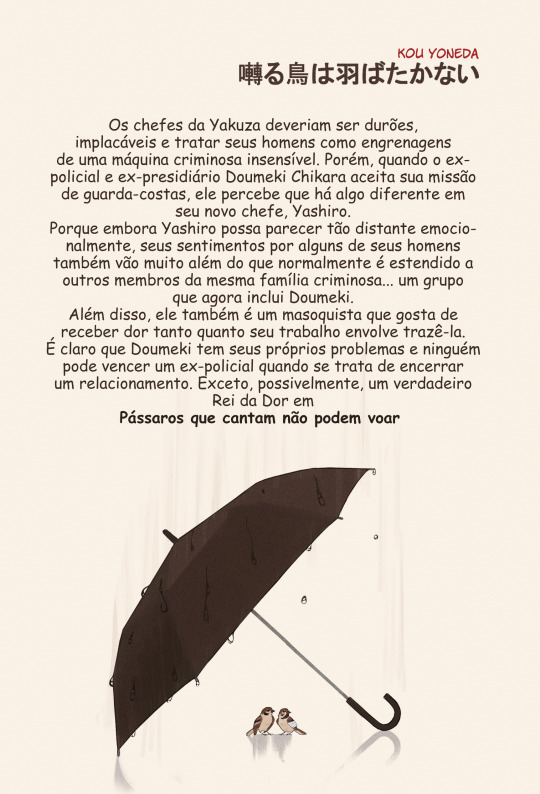
33 notes
·
View notes









